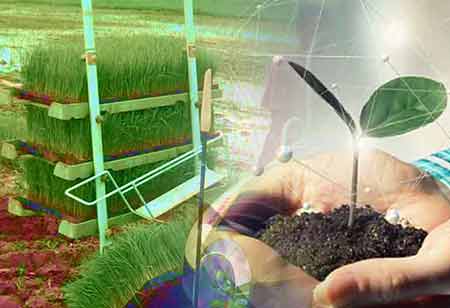Thank you for Subscribing to Agri Business Review Weekly Brief
Indoor Farming: Future!

By
Agri Business Review | Wednesday, July 06, 2022
Stay ahead of the industry with exclusive feature stories on the top companies, expert insights and the latest news delivered straight to your inbox. Subscribe today.
Traditional and AI-based indoor farming will work together in the future.
Fremont, CA: Many disputes to conquer before fears of a worldwide food shortage can be allayed, comprising rising temperatures and more common droughts caused by global warming. These hindrances are making conventional farming methods progressively inefficient and unpredictable.
Traditional farming has also been affected badly by the COVID-19 pandemic. As per the FAO, border closures, quarantines, and supply chain disruptions limit some people's access to food, particularly in countries hit hard by the virus or already impacted by high levels of food insecurity.
There's a rising consensus that the agriculture industry desires to adapt to use less water and chemicals, make crops less susceptible to changes in the climate, and produce more reliable yields. Part of the answer may rest in the emerging start-ups growing produce in indoor environments, where increasing conditions can be better managed.
The indoor farming technology market was esteemed at $23.75 billion in 2016 and is projected to achieve $40.25 billion by 2022. Yields are usually much higher than traditional farming practices. Crops from indoor farming are increased in three dimensions other than two – and can be grown all year round, separate from external weather conditions.
For instance, one of Square Roots' indoor farms produces an equal amount of food as a two- or three-acre farm, just 340 square feet annually. This yield is accomplished by growing plants at 90 degrees and utilizing artificial intelligence (AI) to ensure the optimal environment for each specific plant, including the day and night temperatures and the amount of CO2 needed.
Not just could indoor farming support adapt to a warming planet. Still, it can help slow down climate variation by being more sustainable – through less water and producing fewer emissions. While estimates differ widely, As per the US Environmental Protection Agency, agriculture accounted for 10% of all greenhouse gas discharges in 2018; it is also favorably dependent on, and a pollutant of, water.
Square Roots' pop-up farms are built in city shipping containers, often in parking lots. They serve local communities, reducing emissions compared to traditional agriculture, which usually involves transporting food much further. For example, it has ten farms in Brooklyn that serve 100 retail stores, all within 5 miles of the farm.
At the Plenty head office in South San Francisco, leafy greens consume 1% of the land and 5% of the water compared to conventional outdoor farms.
AeroFarms' indoor farm in New Jersey raises greens, including baby kale, baby arugula, and baby watercress, using 95% less water than traditional agriculture on just 1% of the land required. In addition, the crops grow under an LED light with no pesticides and a fraction of the fertilizer used on traditional farms.
Marketing director Alina Zolotareva says being capable of producing ready-to-eat produce that doesn't need rinsing supports reducing water usage.
This is an evolutionary innovation for agriculture at large, as access to freshwater for rising food is one of the most crucial disputes of our time.
Besides fewer miles and less water, indoor farming doesn't demand pesticides. This is best for the environment and human health as it removes the risk of water contamination because of run-off and is in line with increasing consumer requirements for non-GMO produce.
However, traditional and AI-based indoor farming will work together in the future; there's little uncertainty that indoor farming is helping to satisfy the needs of a growing global population and support traditional agriculture, which is both at the mercy of and exacerbating a warming planet. Only one method will find itself in space – but there's space for them both.





